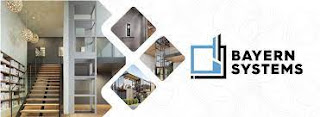Overview of HRIS, ATS and Organizational Chart
Certainly, here's an overview of HRIS (Human Resource Information System), Applicant Tracking System (ATS), and Organizational Chart, outlining their significance, functionalities, and benefits.
HRIS (Human Resource Information System):
Overview: HRIS is a comprehensive software solution that integrates various HR functions, automating and managing human resource-related processes within an organization. It serves as a centralized platform to store, organize, and process employee data and HR-related information.Functionalities:
- Employee Database: HRIS maintains a secure database housing employee information, including personal details, contact information, job history, and performance records.
- Attendance and Time Tracking: It automates timekeeping, tracks employee attendance, and manages leave and absence requests.
- Payroll and Benefits Administration: Facilitates payroll processing, tax deductions, and benefit administration, streamlining compensation and benefits management.
- Recruitment and Onboarding: Assists in the recruitment process by posting job openings, tracking applicants, and facilitating onboarding procedures.
- Performance Management: Helps in setting and tracking employee goals, conducting performance reviews, and managing appraisal processes.
- Training and Development: Manages training programs, tracks employee skill development, and facilitates learning initiatives.
Benefits:
- Efficiency: Streamlines HR processes, reduces manual tasks, and enhances overall efficiency.
- Data Security: Ensures data confidentiality and security compliance.
- Improved Decision-Making: Provides insightful analytics and reports for strategic HR decision-making.
- Employee Engagement: Enhances employee experience through self-service portals and improved communication.
Applicant Tracking System (ATS):
Overview: An applicant tracking system (ATS) is specialized software that automates the recruitment process by managing job postings, receiving and tracking applications, and assisting in candidate selection.
Functionalities:
- Job Posting and Distribution: Posts job openings on various job boards and social media platforms.
- Resume Parsing: Scans and parses resumes, extracting relevant information and organizing applicant data.
- Candidate Management: Manages candidate profiles, tracks application status, and maintains a centralized applicant database.
- Communication: Facilitates communication with candidates through automated emails and notifications.
- Interview Scheduling: Assists in scheduling interviews and managing the interview process.
- Analytics and Reporting: Provides metrics on recruitment performance and candidate pipelines.
Benefits:
- Efficiency: Automates and streamlines the hiring process, saving time and effort.
- Improved Candidate Experience: Enhances communication and interaction with applicants.
- Centralized Data: Maintains a centralized repository of applicant information for easy access.
- Compliance: Helps ensure compliance with hiring regulations and standards.
Organizational Chart:
Overview: An Organizational Chart is a visual representation of an organization's structure, depicting the hierarchy and relationships between different departments, positions, and employees.
Functionalities:
- Hierarchy Display: Illustrates reporting relationships and chains of command within an organization.
- Departmental Structures: Shows the divisions and departments within the organization.
- Role Clarification: Clarifies roles and responsibilities within different levels of the organization.
- Succession Planning: Assists in identifying talent and planning for future leadership positions.
- Communication: Helps employees understand the organization's structure and facilitates communication pathways.
Benefits:
- Clarity and Transparency: Provides a clear overview of the organization's structure.
- Planning and Decision-Making: Assists in strategic planning and organizational restructuring.
- Employee Engagement: Helps employees understand their roles and how they fit into the larger organization.
- Talent Management: Aids in identifying skill gaps and potential for career advancement.
In summary, HRIS, ATS, and Organizational Charts play crucial roles in managing HR processes, recruitment, and visual representation of an organization's structure. They contribute significantly to efficiency, data management, decision-making, and employee engagement within modern workplaces.

.jpg)


Comments
Post a Comment